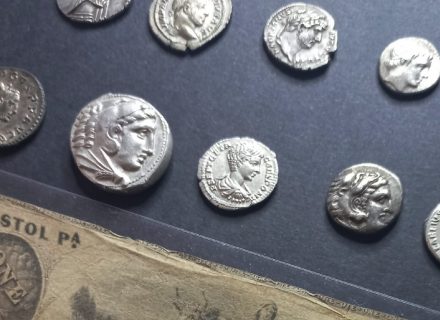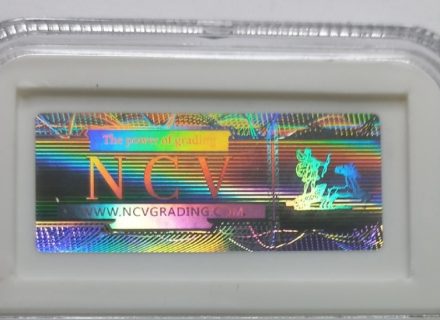The piece of Eight (Spanish dollar): the Spanish coin that ruled the world
Do you like to collect coins? If so, you have surely heard of the legendary Piece of Eight, also known as the Spanish dollar, or known in the Spanish-speaking world as ‘Real de a ocho’. This silver coin was created by the Catholic Monarchs in 1497, and for the following three centuries, it ruled as the world’s first currency, so much so that its exceptional value, quality, and wide acceptance in world markets made it the currency of reference for trade between Europe, America, and Asia. In fact, its influence was so profound that it inspired the creation of none other than the U.S. dollar, which borrowed its weight, law, and symbol. No wonder coin collectors around the world covet this iconic piece.

Origin of the Piece of Eight
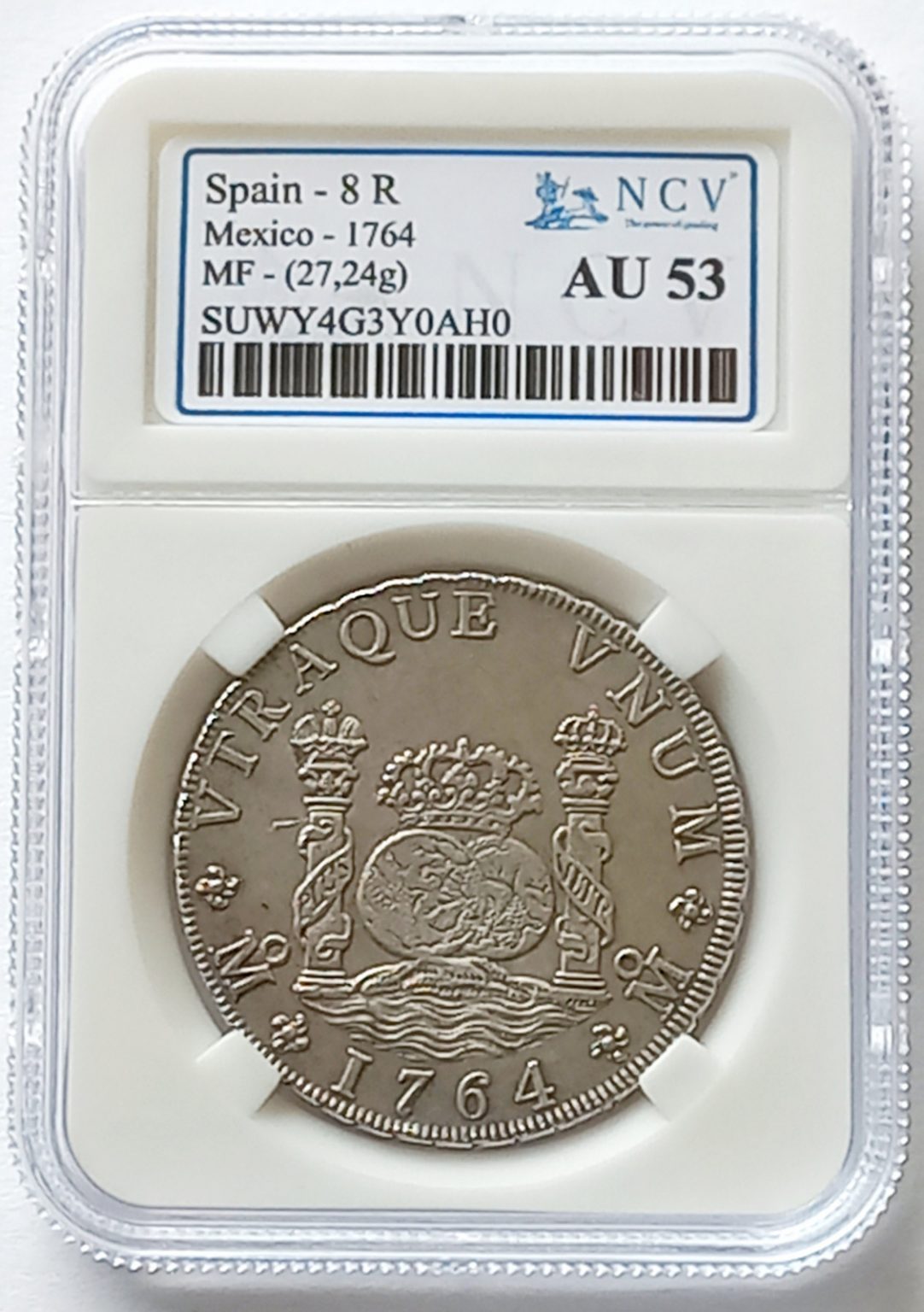
The Piece of Eight (or Spanish dollar) arose as a result of the monetary reform of 1497, which established the silver real as the unit of account in the Crown of Castile. The “real de a ocho” was a Spanish coin with a nominal weight of 550.209 grams in the Spanish system, equivalent to 27.468 grams in the metric decimal system. The coin had a purity of 93.055% and contained 25.560 grams of silver. However, the weight and purity of the coin varied significantly from one mint to another over the centuries.
The Spanish dollar became popular from the 16th century onwards, with the reigns of Charles I and Philip II, representing the period of the Spanish Empire’s most significant expansion and power. Thanks to the conquest of America, new silver mines were developed, especially in Mexico and Peru, which allowed the minting of large quantities of pieces of 8 in the colonies. The first mint was founded in Mexico in 1536, followed by those of Santo Domingo, Lima, Potosi, Guatemala, Santa Fe de Bogota, and others. The Potosí mine has legendary resonances, and the expression “cuesta un potosí” (it costs a potosí) still survives today to explain that something is costly.
The 'Columnario' ('Pillar Dollar')
Initially, the Piece of Eight had a simple design, consisting of the coat of arms of the kings of Spain on the obverse and a cross with the Hercules columns and the motto “Plus Ultra” (meaning “beyond” in Latin) on the reverse. Well, starting in 1732, a new design was introduced called “columnario” (also known in ENglish as the ‘Pillar Dollar’, the unofficial but common name for the Spanish colonial America’s piece of eight coin), which showed two columns crowned by a globe and surrounded by the motto “Vtraque Vnum” (“both are one”, in reference to the Old and the New World). From 1772 onwards, the obverse showed the bust of the king and the legend with his name and title.
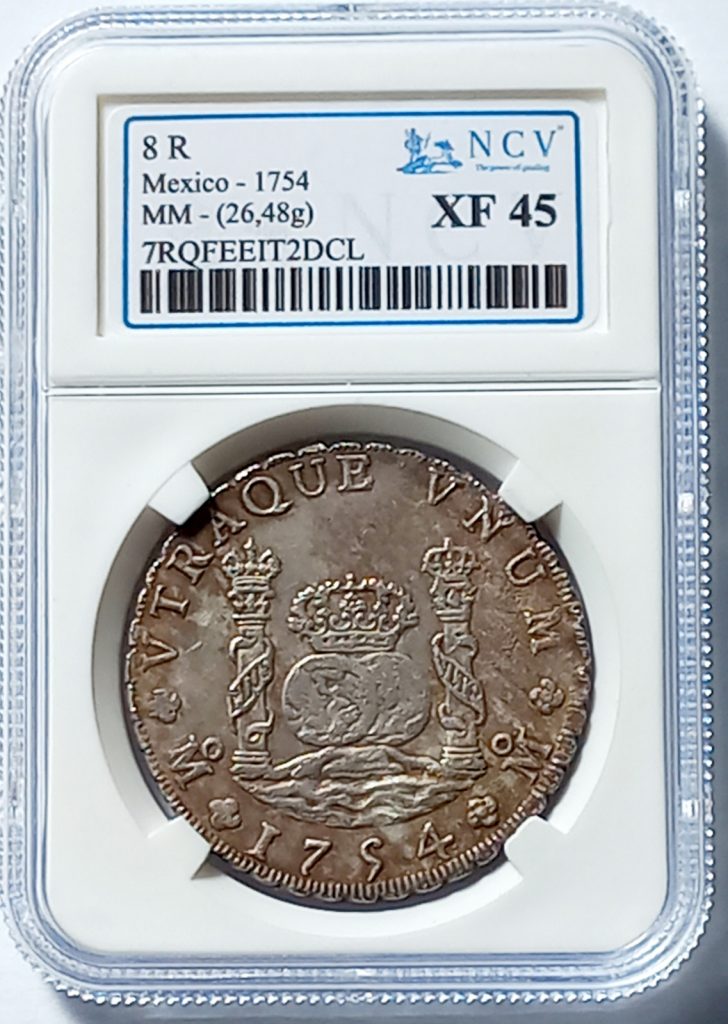
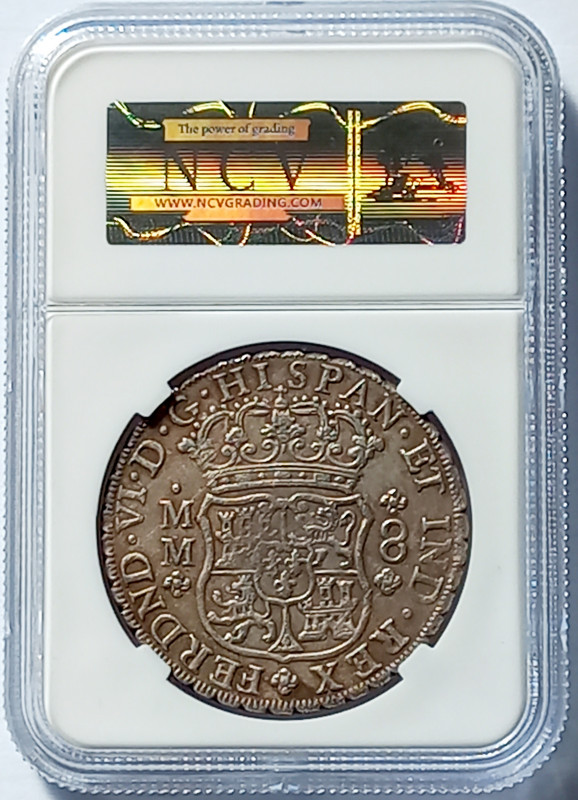
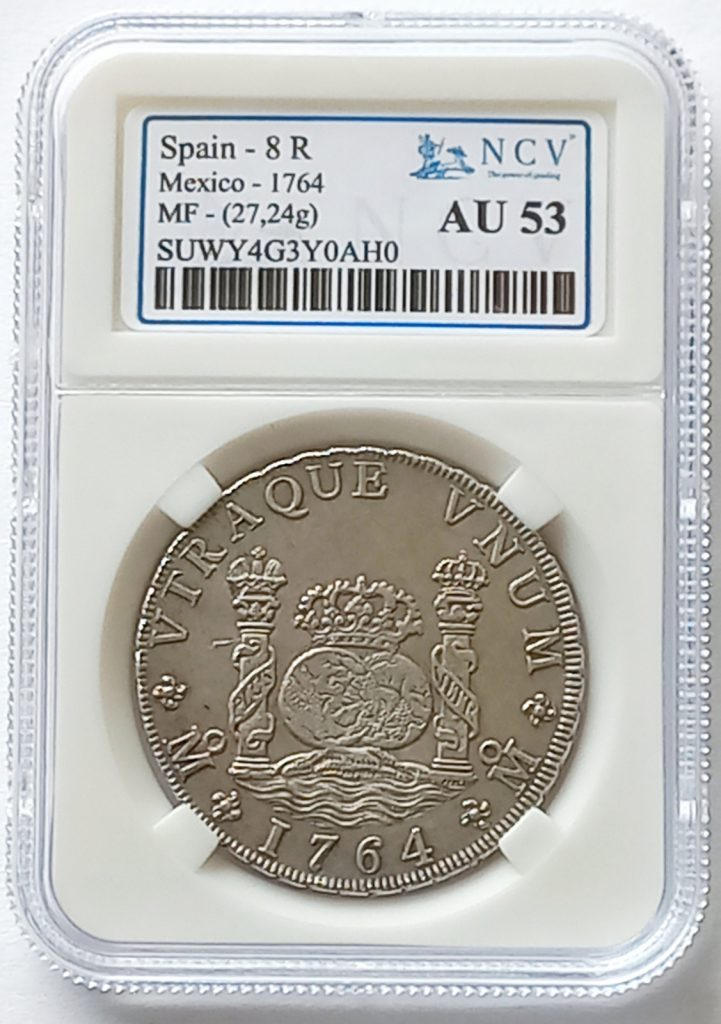

The role of the Piece of Eight in history and international trade
The Piece of Eight (Spanish Dollar)(Spanish DOllar) was the currency that facilitated trade between the different regions of the Spanish Empire, which ranged from Europe to America, the Philippines, and other possessions in Africa and Asia. The Piece of (or, as it is better known in the English-speaking world, the “Spanish dollar”) became the international currency par excellence, accepted in all markets, since it had a constant and uniform value worldwide. It circulated so widely that it became the first legal tender in the United States until 1857 and the basis for the development of the U.S. dollar, which, as we mentioned at the beginning, adopted its weight, law, and symbol.
Thus, the Real de a Ocho was also the currency that boosted world trade by facilitating the exchange of goods between continents. For example, it was the currency used on the famous Manila Galleon, which connected the port of Acapulco with the port of Manila and carried Asian products such as silk, porcelain, spices, and precious stones to America and Europe. The Piece of Eight was also used in the triangular trade between Europe, Africa, and America, which involved the transport of sugar, tobacco, and other products and the ignominious transport of slaves. It was accepted in African ports, Ottoman markets, the Mughal Empire, China, and Japan.
This currency reflected the power and influence of the Spanish Empire in the world. It was coveted by its enemies and competitors, to the point of suffering the attacks of pirates and corsairs, who assaulted the ships and fleets that transported the American silver to Spain. The Spanish dollar remained circulated until the 19th century when the English crown and the U.S. dollar finally replaced it.
The Piece of Eight in the U.S. numismatic market
The Piece of Eight is a coin that has particular relevance for the numismatic market in the United States due to its historical and monetary ties with this country. Not for nothing was it the first legal tender in the United States, from independence until 1857, and the basis for the development of the U.S. dollar, which adopted its weight, law, and symbol. The currency circulated in the thirteen original states and was used to finance the revolution, war, and nation-building. For all these reasons, the Spanish dollar is a coin that arouses the interest and passion of American collectors, who consider it a fundamental piece of their history and culture, and this translates into high bids at auctions.

And so much for the presentation of this beautiful and coveted coin that impacted so much international trade. It seems very fashionable now, and many collectors want to get their hands on one. If you have one and wish to discuss its characteristics with us, do not hesitate to write about it in the comments. We would love to read your contribution.


